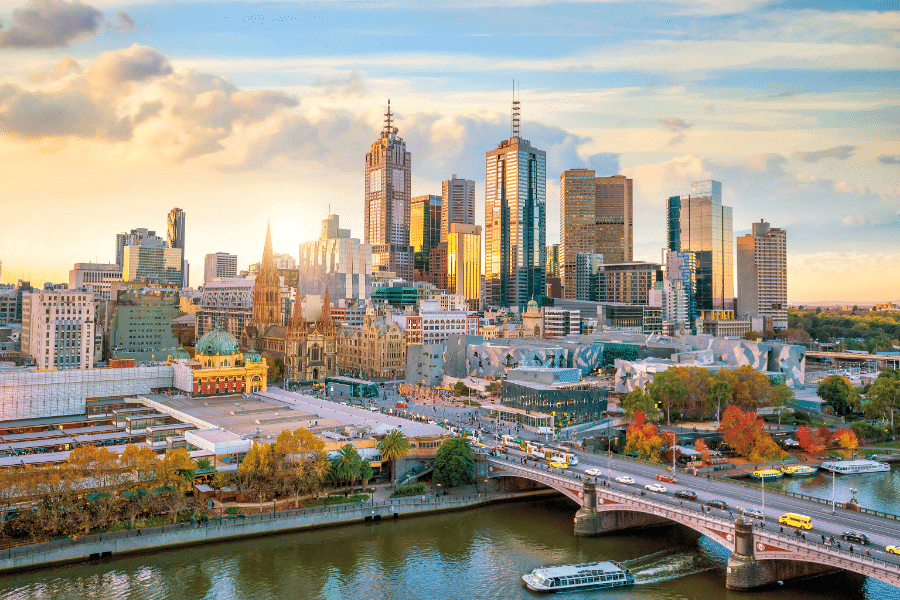CUUNA: The Five Hardest Countries to Immigrate To
September 22, 2023
Europe is undeniably one of the most accessible destinations to travel to. We often talk about the idea that a nation’s culture shapes its future economic potential.
While a country may sustain itself temporarily by closing its doors, restricting immigration, and harboring suspicions toward all visitors, such a path is not sustainable in the long run.
On the other hand, countries that open their doors to foreigners for both tourism and immigration are likely to be economically successful.
In today’s age, the only potential risk in opening yourself to foreigners is the competition from so many countries also opening up to travel and investment. Still, there are countries that do close their doors to most of the world.
If you want help creating a passport portfolio to ensure you have access to the right countries, feel free to fill out the application form to become a client. The experienced team at Nomad Capitalist can help you determine whether it’s worth the hassle to take on the hardest countries to immigrate to or if you can go where you’re treated best without them.
To understand the consequences of going to one of the hardest countries to immigrate to, let us consider two countries: the United States and Singapore.
SINGAPORE VS. THE UNITED STATES
Singapore is a multicultural mecca of people from around the world. Originally, Malaysian-Chinese moved down to Singapore to avoid perceived persecution from Malays in what was then Malaya. But, Singapore’s government realized early on that remaining a strictly Chinese enclave would be a recipe for disaster.
Today, Singapore is about as much of a melting pot as you can get, with people speaking English as well as an array of other languages. Politicians don’t complain about “Press 2 for Chinese”; they embrace variety and realize that their success is based on a diverse group of people and a top work ethic.
Citizens of most countries can visit Singapore without a visa, and the few countries that can’t are eligible to apply online for an e-visa. It’s extremely efficient.
On the other hand, countries like the United States have been making it next to impossible to get in. They actively work to be one of the hardest countries to immigrate to.
There are endless stories, even from those entering from European countries, of US immigration officers making them feel less than welcome, and the country’s overall culture is to keep foreigners out.
In contrast to Singapore, citizens of around only 40 countries can enter the United States without a visa (technically, even citizens from these visa-waiver countries have to pay $21 and undergo ESTA pre-clearance, which requires as much effort as getting a visa from some countries).
US immigration is quite suspicious of foreigners who arrive. Even Europeans get heckled and subjected to lots of questions. But the United States is not the only country to do this.
On the other side of the ocean, you will also experience delays in entering the United Kingdom due to heightened screening, and you will likely encounter the same in Canada and Australia.
Surprisingly, the United States is not the only country that’s lining up for the top spot on the list of the hardest countries to immigrate to.
While you may not run into as many problems getting into these types of countries if you have a passport from the European Union, Japan, or an English-speaking country, just about everyone else in the world is going to have issues getting into a select number of countries that we have dubbed the CUUNA countries.
And, if truth be told, you are better off without them.
CUUNA: The Hardest Countries to Immigrate To
What is CUUNA? It’s our acronym for the five hardest countries to immigrate to or enter as a tourist. They are Canada, the United States, the United Kingdom, New Zealand, and Australia.
These countries have a few things in common:
- They make life difficult for tourists. If you plan to renounce your current citizenship and become Dominican or St. Kittsian, these countries may question you extensively if you try to visit.
- They have higher investor visa minimums – if they have an immigration program at all. Most of the countries have very unclear or difficult immigration regimes for entrepreneurs wishing to start a business there.
- They tend to be more hawkish. While countries like Switzerland prefer to remain neutral, these countries tend to send troops to whatever latest mission is going on in the Middle East or elsewhere in the world.
- For whatever it’s worth, they are all English-speaking. This is perhaps the most troubling for native English speakers because it limits our options. Ireland is the most notable English-speaking country not on this list, but there are plenty of other countries suited to English speakers to choose from.
C: CANADA
Canada has started to become rather difficult and more and more like the United States. Canada has joined a growing list of countries that require foreigners with visa-free access to go through an online pre-clearance before entering the country, and the European Union has also joined in, requiring pretty much everyone visiting Europe from 2024 onwards to obtain an approved ETIAS online prior to departure.
Obtaining a tourist visa to visit Canada is an even more complex process than getting a US tourist visa. Foreigners have long complained of intrusive questions about their work and financial history, as well as being asked to remember every address where they have ever lived.
Even Americans frequently have trouble entering Canada. For example, former US President George W. Bush once had trouble entering the country due to a past DUI conviction.
U: UNITED STATES
You may want to avoid transiting through the United States because of the delays and frustration involved. Even if you’re only connecting in the US, you must go through the rigors of TSA security, as well as customs and immigration.
There is no “sterile transit” in the US, meaning you are treated as if you are visiting the country just by having a connecting flight. That means foreigners must have a tourist or transit visa and pay the $21 for an ESTA.
And your time at the airport could last hours as you pass through immigration and customs. Those wishing to immigrate to the United States face similar challenges due to all of the anti-terrorism measures and other procedures.
U: UNITED KINGDOM
At one time, we would have considered the United Kingdom the most friendly country on this list, but things have changed. The UK is now among the countries with the biggest crackdown on immigration procedures, especially in the wake of the refugee crisis. The United States has a history of never letting a crisis go to waste, and the UK appears to be taking that tack now.
Post-Brexit measures to control immigration have included plans to house people on a barge and to ship others to Rwanda. Despite all these efforts, net immigration to the UK hit a record high of 606,000 in 2022.
You can still apply for a UK innovator visa even if requirements are demanding, and the uber-wealthy can enjoy “non-dom” status that allows them to live in London without paying any income tax. Or, you can get a Caribbean passport for as little as $100,000 with visa-free access to the UK.
The UK also maintains a list of people who are barred from entry into the country; most of them are terrorists, but the likes of US talk show host Michael Savage are also on the list. While a few commonwealth countries that don’t have visa-free access to Europe do get access to the UK, Britain excludes citizens from a number of countries from visiting the UK through Europe.
N: NEW ZEALAND
New Zealand is perhaps the most welcoming of the five, although its visa process is rather cumbersome and confusing. This is problematic because New Zealand grants visa-free access to so few people.
Like most other CUUNA countries, New Zealand also has a relatively high barrier to entry for its investor visa program. If you’re over 55 or dont have a skilled occupation they are looking for, you can all but forget about moving there.
A: AUSTRALIA
We have often surmised that United States foreign policy is enabled by being a relatively isolated nation of people who don’t travel that much. In Europe, on the other hand, it’s practically impossible not to visit another country or speak another language. Using the isolation test, Australia takes the cake.
Australia also requires all tourists to obtain e-visas, even those from wealthy countries. Additionally, most nationalities require a visa to visit Australia. There is also a growing anti-immigrant sentiment coming out of Australia now that the mining boom is over.
The country’s current government has embarked on a significant overhaul of immigration policies to bring down Australia’s net migration.
Australia is clearly becoming less and less free. If any country will become the next United States in terms of high taxes, high authoritarianism, and anti-immigrant sentiment, it could well be Australia. Australia is not only one of the most challenging countries to immigrate to but also the most difficult to get a tourist visa.

WHAT CUUNA MEANS FOR YOU
Here’s the good news: if you’re a citizen of a wealthy country, you likely don’t need to migrate to Australia or Canada. While citizens of wealthy countries can be delayed by immigration officers asking a lot of questions, it’s rare for a Western citizen to actually be denied entry to these or any other countries.
Additionally, these countries are so far removed from the places where our readers generally want to live that it doesn’t really matter.
If you’re looking to lead a truly global lifestyle, you can avoid CUUNA relatively easily and without a significant lifestyle impact.
There are simply so many other places to visit.
If these countries are places you would like to visit, there are still plenty of passports that can get you in. If you assemble a strategic passport portfolio, you can still get into nearly any country you might want to go to. Even if they are one of the hardest countries to immigrate to, that doesn’t mean it’s impossible.
And if a visa is required to enter as a tourist, that’s not the end of the world.
Here’s the potentially bad news: if you are not a CUUNA citizen but want to live in a big, well-developed country with high taxes, you’ll have a lot harder time doing so when compared to entering countries like Spain, Belgium, Malaysia, Panama, or any number of other places.
This extends to folks looking to renounce US citizenship who still want to live in an English-speaking country. If that’s you, your best bet might be Ireland, where both an entrepreneur visa program and citizenship by descent are straightforward to qualify for.
Or, if time is of the essence, you can always apply for citizenship by investment in Malta, which is the one economic passport with visa-free access to the United States.
You can also look into your possibilities to qualify for citizenship by descent in a European country with a Tier A passport.
Or, if you have the time and money, consider a Golden Visa that will qualify you for naturalization down the road.
Continental Europe has become much more open to foreigners than English-speaking CUUNA countries.
But one way or another, you should consider whether being able to visit these five countries is that important to you when planting your flags. Do you really need access to every country in the world?
There are ways to maintain your access to CUUNA but also acquire a secondary place to expand your personal freedoms. Our team at Nomad Capitalist will help you determine whether you actually need to have visa-free access to these countries.
Whatever you decide, the CUUNA countries are the hardest countries to immigrate to, hands down. They are the ones you will likely have issues with when you are in a renunciation situation or if you have a less-powerful passport to begin with.


How to Get UAE Citizenship – The Complete Guide
Sovereignty – both national and personal – shapes ambition, secures wealth, and defines status in a shifting global order. For the high-achieving global citizen, acquiring a second or even third passport is more than a lifestyle upgrade; it’s a strategic move in long-term financial and geopolitical positioning. But not all citizenships are created equal – […]
Read more

A Gateway to Central Asia: New Kazakhstan Golden Visa Program for 2025
Central Asia just raised the stakes in the golden visa game. In May 2025, Kazakhstan officially launched a 10-year Golden Visa program in an ambitious move to position the country as a serious contender in the global investor migration space. At a time when other international regions are rolling back their citizenship and residency options, […]
Read more

Top Countries Offering Golden Visas in 2025
Residency is no longer about lifestyle – it’s about leverage In an increasingly unpredictable world, Golden Visas offer something most governments can’t: certainty in exchange for capital. They are more than migration tools; they are strategic safeguards offering residence rights, future citizenship, global mobility, and access to tax-friendly jurisdictions. For investors, entrepreneurs and globally minded […]
Read more




